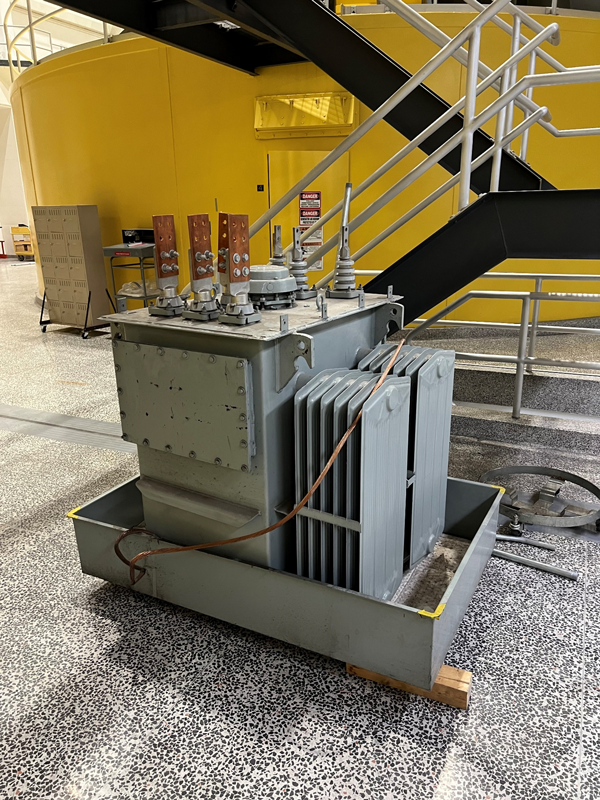 |
|
UC Today is the quarterly newsletter of the Bureau of Reclamation’s Upper Colorado Basin Region covering the states of Colorado, New Mexico, Utah and Wyoming. We look forward to sharing with you some of the projects and activities that we have been working on to manage, develop and protect water and related resources in an environmentally and economically sound manner in the interest of the American public. Winter 2024 |
||||||||||||
| Upper Colorado Basin Region Office | Albuquerque Area Office Power Office | Provo Area Office |Western Colorado Area Office | Four Corners Construction Office |
||||||||||||
|
from the |
 |
| Downstream view of Glen Canyon Dam in Page, Arizona. Reclamation photo |
Reclamation analyzing Glen Canyon Dam operations to disrupt invasive fishBy Upper Colorado Basin Public AffairsReclamation recently released the draft Supplemental Environmental Impact Statement for the Glen Canyon Dam Long-Term Experimental and Management Plan. The supplement is to the December 2016 Record of Decision for the Glen Canyon Dam Long-Term Experimental and Management Plan Final Environmental Impact Statement, referred to as the LTEMP ROD. The SEIS considers six flow options including a no action alternative. Proposed flow options would potentially run through 2027. The SEIS also considers the high flow experiment (HFE) protocol by including the latest scientific information to improve Reclamation's ability to implement high flow releases as originally intended. As Lake Powell's water elevation has declined, the upper layer of the lake where most fish reside, has become closer to the water intakes for Glen Canyon Dam, and nonnative fish are now more likely to pass through the dam and downstream into the Colorado River. This upmost layer of the reservoir is also the warmest and when discharged downstream, increases the temperature of the river, creating ideal spawning conditions for warm-water, non-native fish such as smallmouth bass to reproduce and eventually establish populations.
The draft SEIS was published in the Federal Register on Feb. 9, starting the 45-day public comment period. Three public meetings were held to provide information on the draft SEIS and answer questions. The public comment period concludes March 25. Please send written comments to LTEMPSEIS@usbr.gov or by mail to Bureau of Reclamation, Attn: LTEMP SEIS Project Manager, 125 South State Street, Suite 800, Salt Lake City, UT 84138. |
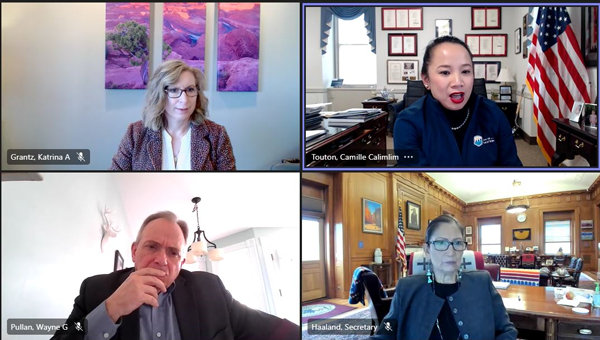 |
| A screenshot taken from the virtual meeting with Department of the Interior Secretary Deb Haaland. Reclamation image |
Celebrating our contributions: Meeting with Secretary Haaland and Commissioner ToutonBy Riley Martin, Upper Colorado Basin Public AffairsSecretary of the Interior Deb Haaland and Bureau of Reclamation Commissioner Camille Calimlim Touton hosted a virtual event to recognize workers from Reclamation's Upper and Lower Colorado basins for their dedication and hard work to protect the stability and sustainability of the Colorado River Basin. Nearly 70 employees attended the event, where Commissioner Touton discussed the significant efforts undertaken by both regions to the basin that both she and the Secretary call home, and support the 40 million people reliant on the Colorado River. The Commissioner specifically acknowledged some individuals by name, specifically noting Kathy Callister's work on LTEMP SEIS and Valerie Deppe's work to allocate funding for the Upper Colorado River Basin System Conservation and Efficiency Program. Secretary Haaland expressed great gratitude to the staff whose work focuses on Colorado River Operations: Secretary Haaland's remarks:
Following the Secretary's remarks, select members from each region briefly explained their team's work on specific ongoing efforts on the river. UCB's Deputy Regional Director Katrina Grantz expressed gratitude for the collaborative efforts and the mission aimed at safeguarding the Colorado River Basin. The challenges of climate change have required dynamic responses to changing hydrology and the threat of invasive species. Despite these challenges, Grantz shared an optimistic outlook, stating, "I am an optimist at heart, and I believe we have the people and resources to get through this." As we begin 2024, UCB can anticipate another busy year as we continue to develop the Supplemental Environmental Impact Statement to help disrupt invasive fish from spawning downstream of Glen Canyon Dam(LTEMP SEIS), the revised draft SEIS for Near-term Colorado River Operations (2007 Interim Guidelines), and the multi-year post-2026 process that will identify a range of alternatives and ultimately determine operations for Lake Powell and Lake Mead and other water management actions, potentially for decades into the future. All this, while continuing work on investments in water security in the region with Bipartisan Infrastructure Law and Inflation Reduction Act funding. |
|
from the |
 |
| Underwater excavating takes place from a barge at Deer Creek Reservoir. Crews had to excavate loose material that had fallen from the reservoir's bank in the area where the new intake structure would be placed. Reclamation photo |
Deer Creek Intake Project making progressBy Becki Bryant, Upper Colorado Basin Public AffairsMay will mark the one-year anniversary since construction started in earnest on the Deer Creek Intake Project (DCIP). The DCIP is the largest and most complex renovation to take place at Deer Creek Dam since its completion in 1941 and includes modifying the existing intake structure to accept a bulkhead plug, constructing a new bypass tunnel and vault structure, and refurbishing the existing guard gates. The project is being hailed as a "first of its kind in Utah"—with some of the construction taking place under water, requiring skilled divers, tugboats, barges, and other specialized equipment.  "Progress on the project is moving along at a steady pace thanks to the efforts of all involved parties," said James Sheridan, a civil engineer with Reclamation's Provo Area Office, who is responsible for monitoring the project's construction. In less than a year the DCIP has reached significant milestones—both underwater and above ground. The downstream soil nail wall, as well as the wall's entry portal for the microtunnel boring machine (MTBM) is complete. The MTBM will create a new 800-foot-long bypass tunnel.    The upstream exit portal and reception cradle for the MTBM is complete, with the bulk of the work performed "in the wet"—approximately 80 feet below the reservoir's surface. The MTBM exit portal is made of massive concrete panels that serve as the foundation and walls of the new intake support structure. Crews first assembled the panels on land, then pushed the pieces over to the work area on barges positioned by tugboats, carefully eased the panels into the water with a crane, and then assembled the panels into place with the help of a dive team. "We decided to utilize an innovative design and construction method to modify the intake and refurbish the guard gates without draining the reservoir to maintain critical water storage, minimize environmental impacts, and ensure an uninterrupted water supply," said Operations and Engineering Manager for the Provo River Water Users Association Brad Jorgensen, who is also the DCIP project manager. Located on the Provo River about 16 miles northeast of Provo, Utah, Deer Creek Reservoir has a storage capacity of 153,000 acre-feet of water and conveys water to more than 1.5 million people—nearly half the state's population. The dam's foundation and spillway gates were brought up to seismic standards in 2007 as part of a Reclamation Safety of Dams modification. The Deer Creek Intake Project will further enhance the reliability of the dam by retrofitting and refurbishing many of the aging infrastructure components. It is estimated the project will cost $100 million and will take three years to complete. For more information, visit the Deer Creek Intake Project website. |
 |
| Crews have removed the old regulating valve (left photo) on one of two penstocks at Deer Creek Dam to install a new plunger regulating valve (right photo). Once the new valve is in place, Reclamation will run flow tests to ensure it works as intended. Reclamation photos |
New valves for Deer Creek penstocksBy Becki Bryant, Upper Colorado Basin Public AffairsA much-anticipated delivery arrived at Deer Creek Dam in early January. Two new plunger valves, each measuring approximately 54 inches in diameter, made their way from Germany where they were specially made for the dam's outlet works. The original valves had been refurbished multiple times and were at the end of their lifecycle. The new valves will help to meet water delivery needs and flood control releases from the dam for many years to come. While this work is not part of the Deer Creek Intake Project, it is going on at the same time. Installation of the first valve is underway, and it will be tested before the second valve is installed. The goal is to have both regulating valves installed and working before the irrigation season starts. |
 |
| Oct. 27, 2023, crews install a new 12-inch steel bypass pipeline along the ceiling of the outlet works tunnel at Starvation Dam. The bypass pipeline allows a smaller volume of water to be delivered (compared to the outworks tunnel) for irrigation. Reclamation photo |
Starvation bypass project completeBy Becki Bryant, Upper Colorado Basin Public AffairsApproximately 640 feet of new bypass piping is in place at Starvation Dam ahead of the upcoming irrigation season. The original steel bypass pipeline, which runs along the ceiling of the outlet works tunnel, was showing signs of corrosion and coating failure, particularly at the couplers and hangers—but that was only part of the picture. Crews couldn't see the rest of the pipeline as it traveled through the tunnel wall and underground to the sleeve valve control structure, where the water is released for irrigation or back into the Strawberry River.  To get the whole picture, the Central Utah Water Conservancy District (CUWCD), who is responsible for operating and maintaining the dam and its infrastructure, dug some exploratory potholes to determine the condition of the buried portion of the pipeline. That spot-check investigation revealed corrosion at some of the coupler-type joints and one leaking joint.  As a result, the CUWCD made the decision to replace the entire bypass pipeline, as well as build a new meter vault and install new metering equipment to measure the flow of delivered water. Once the CUWCD determined the scope of work, they coordinated project details with the Central Utah Project Completion Act (CUPCA) Office and Reclamation's Provo Area Office.  "From beginning to end, this project progressed smoothly. We had excellent coordination between the different groups and construction was completed in about a year's time," said Jared Elliott, a civil engineer with Provo's Dam Safety and Security Group. Starvation Dam and Reservoir were constructed between 1967 and 1970 on the Strawberry River approximately three miles upstream from the town of Duchesne, Utah. The reservoir has a storage capacity of 167,310 acre-feet and stores the surplus winter and spring flows of the Duchesne and Strawberry rivers. The Starvation Collection System is a component of CUPCA's Bonneville Unit, the largest unit of the CUP, and develops water within the Uinta Basin of eastern Utah for irrigation and municipal use, as well as providing flood control, recreation, and fish and wildlife benefits. "This was a critical project that allows Starvation Reservoir to continue its mission. CUWCD is to be commended on their quick and efficient identification and replacement of aging infrastructure," said Paul Christensen, CUPCA Program Director.  |
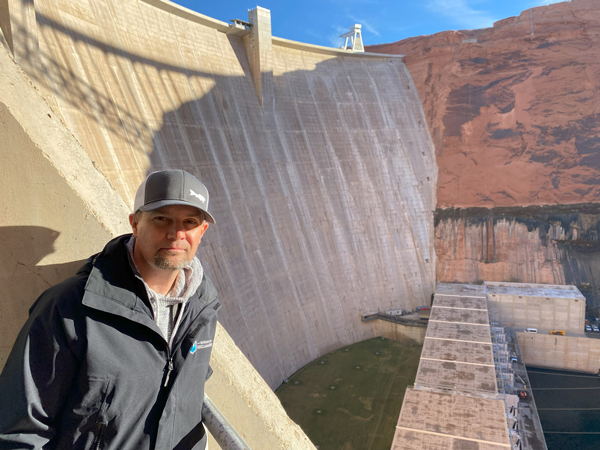 |
| Central Utah Project Completion Act Office Director Paul Christensen. Reclamation photo |
Paul Christensen will take on the new role of program director for the Central Utah Project Completion Act OfficeBy Amee Andreason, Upper Colorado Basin Public AffairsPaul Christensen was recently selected as the new program director for the Central Utah Project Completion Act office. In this position, he will manage Utah's largest and most comprehensive federal water resource development project. Christensen was the deputy area manager for the Provo Area Office for 3 years where he oversaw water projects throughout Utah, Wyoming, and Idaho. He began his Reclamation career in 2003 as a civil engineer in Provo's Field Engineering Division and progressed through roles as field engineering division manager, assistant area manager, and deputy area manager throughout the years.
Over the last 20 years with Reclamation, Christensen has worked with water users, contractors, and state and local partners to complete dozens of projects. The work included developing new water storage and conveyance infrastructure to rehabilitate aging water and hydropower infrastructure for improved resiliency and sustainability. He has played a significant role in construction of various features of the Central Utah Project, serving as resident engineer in support of the Central Utah Water Conservancy District on several phases of the Utah Lake Drainage Basin Water Delivery System and replacement of the Olmsted Hydroelectric Power Plant. His skills position him as a great successor to oversee the completion of the Central Utah Project, which provides the opportunity and mechanism for Utah to develop a significant portion of its allocated share of Colorado River water for beneficial use. Christensen will be the third program director, replacing Reed Murray.
Christensen was selected as Reclamation's Upper Colorado Basin Region Engineer of the Year in 2018 and was awarded the Superior Service Award in 2023. He has a Bachelor of Science degree in Civil Engineering from Brigham Young University and is a registered Professional Engineer in the State of Utah. |
|
from the |
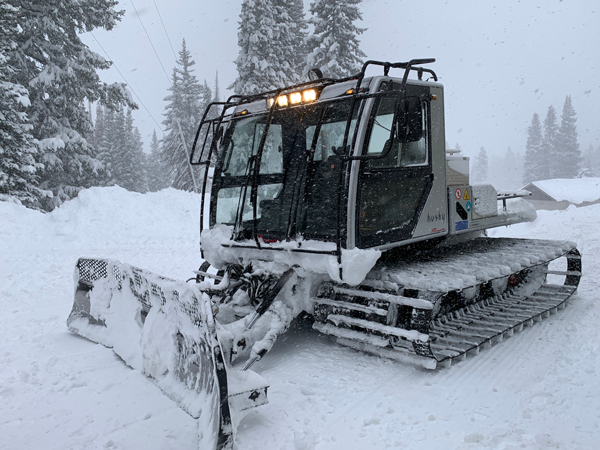 |
| One of the snow cats used by the Bonham Field Office to access the Collbran Project in the wintertime. Reclamation photo |
Snowy commutes: Winter at the Bonham Cottonwood Collection SystemBy Justyn Liff, Western Colorado Public AffairsThe Collbran Project in west-central Colorado is made up of three parts: the Bonham-Cottonwood Collection System (collection system) operated by the Western Colorado Area Office, Vega Dam and Reservoir along with the Southside Canal operated by the Collbran Conservancy District, and the Upper and Lower Molina Powerplants operated by the Curecanti Field Division, part of the Upper Colorado Basin's Power Office.  On top of the Grand Mesa at 9,800 feet about 54 miles from Grand Junction, Colorado, is the Bonham Field Office which has three full-time employees who operate the collection system year-round. The collection system is a reserved works, meaning that Reclamation owns, operates, and maintains the facilities, such as pipelines, inlet structures and buildings. Engineering equipment operators Tony Matarozzo, Chain Locke and Roy Pryor make up the Bonham Field Office team and have many duties. They are responsible for getting readings twice a week on the 15 reservoirs that store water as part of the collection system during irrigation season and coordinating with the Collbran Conservancy District to inform them of releases required from Vega Reservoir for this portion of the project. In addition to checking reservoir levels, they monitor flows in pipelines, maintain and repair aging infrastructure and ensure that water is available in the Bonham and Cottonwood pipelines to deliver to the Upper Molina Penstock and coordinate with the employees working at the Upper and Lower Molina Powerplants, to inform them of water available for power generation. Power is generated year-round, requiring Bonham Field Office employees to access the collection system all months of the year.    Snow and freezing temperatures add a layer of complexity to the job in the winter months since most of the work occurs with snow on the ground, making it necessary to use snow machines to access sites several months of the year. Last winter the upper Colorado region received record snowpack, peaking at 161% of median in April and the Bonham team was well prepared. "It is imperative that employees at remote sites, such as the Bonham Field Office, can perform the duties of their job in all types of weather and in Colorado during the winter months, that means being prepared for a lot of snow," said Western Colorado Resource Manager Reece Carpenter. The building that houses the generator used to provide power to the field office shop and office building also stores a snowcat, which is used by employees to get to areas of the collection system for readings in the winter months. The snow also brings a higher level of physicality to the job for the field office, where the employees also make good use of snow shovels throughout the winter, too. Last year's snowpack was memorable, but snow is a factor this team deals with every winter. This year the snowpack is currently at 100% of median, so you can count on a winter wonderland at the Bonham Field Office!  |
|
from the |
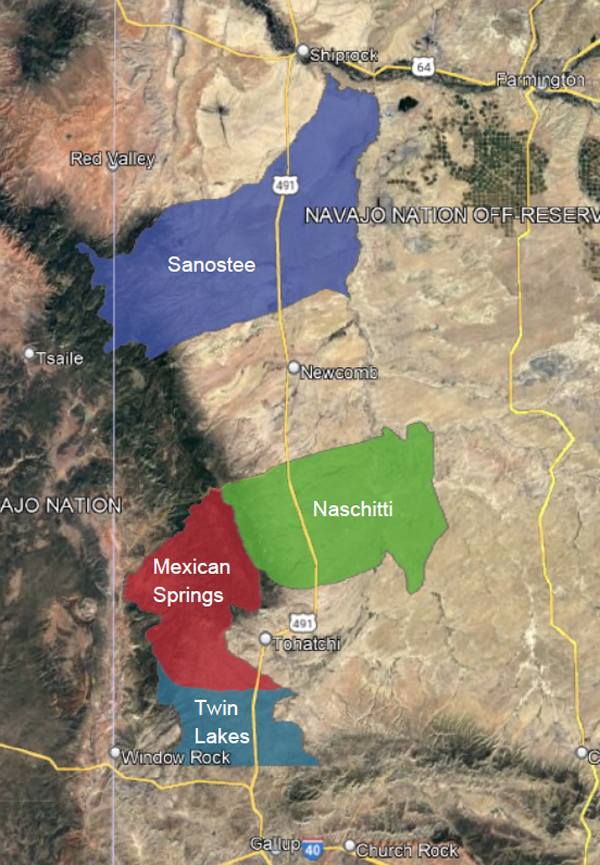 |
| Map showing the boundries of the Sanostee, Naschitti, Mexican Springs and Twin Lake chapters between Shiprock and Window Rock, New Mexico. Reclamation map |
Why is NGWSP an important project to the Navajo chapters?By Hubert (Chico) Quintana, Civil Engineer, Bureau of ReclamationThe Navajo Gallup Water Supply Project is designed to deliver safe, clean, and reliable drinking water to the 43 Navajo chapters within the Project Service Area in western New Mexico and the Window Rock and Fort Defiance area in east-central Arizona. The future delivery of a drinking water supply throughout this portion of the reservation poses a great opportunity for the communities to plan for many developments and improvements that have not been possible with limited water sources. Through an ongoing planning outreach work group, Reclamation communicates construction updates and plans with chapters along NM 491 who will receive treated water from the San Juan Lateral of the NGWSP. The chapters are excited about development and shared some of their plans for 2028 and 2029 when water is scheduled to reach their community. Twin Lakes Chapter Coordinator Juanita Tom said her chapter plans to expand the current service area and extend the waterline out further to provide water to more community residents. She also mentioned that the chapter plans to look into additional housing, depending on the availability of funding from the American Rescue Plan Act of 2021 (ARPA) and Indian Health Services (IHS). Generally, the development plans of the Mexican Springs community are focused on the improvement of living conditions. Mexican Springs Chapter Coordinator Christine Sam said that her community plans to find funding to build a new community center which will host future Chapter meetings and community events. The community would like to provide more housing through the Navajo Housing Authority (NHA), however, this will require more area residents to apply for the NHA housing to allow more consideration for the funding of such projects. The NGWSP would be able to supply the water necessary for these larger housing projects. The Naschitti Chapter has plans for a new multipurpose facility, and an economic development corridor filled with business buildings. Naschitti Chapter Manager Carissa Wood also mentioned that their chapter plans to pursue the possibility of future NHA Housing Projects for the community. Sanostee Chapter Coordinator Dexter Begay shared plans to secure a 100-acre plot of land from the Navajo Nation for the construction of a Chapter compound with a new community multipurpose building, Chapter house, and possibly a new cemetery. There was also mention of a new Chapter building. The Sanostee Chapter building currently is approximately 8.8 miles west of Hwy 491. The new compound will be located next to Hwy 491 near its intersection with Route 34 within the Sanostee Chapter area. As the 2029 completion date for NGWSP nears, the various plans for community development ideas will continue to approach reality. Community members and Reclamation look forward to hearing more about these and other exciting opportunities afforded by clean and reliable drinking water access to Navajo Nation communities. |
|
from the |
 |
| Scott Stratton, Elephant Butte Powerplant, wiring the different circuits the 487B protects with Dan Fox, Glen Canyon Powerplant, assisting. Reclamation photo |
Elephant Butte "BUSy" taking care of bus relayBy Pacifica Casares-Chehy, Albuquerque Public AffairsHow does power get from a generator to a transformer? By bus, of course! 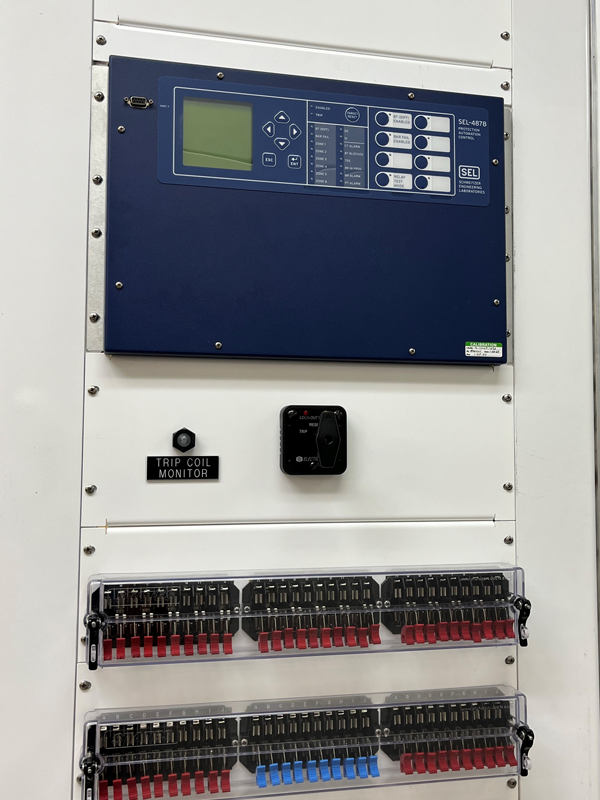 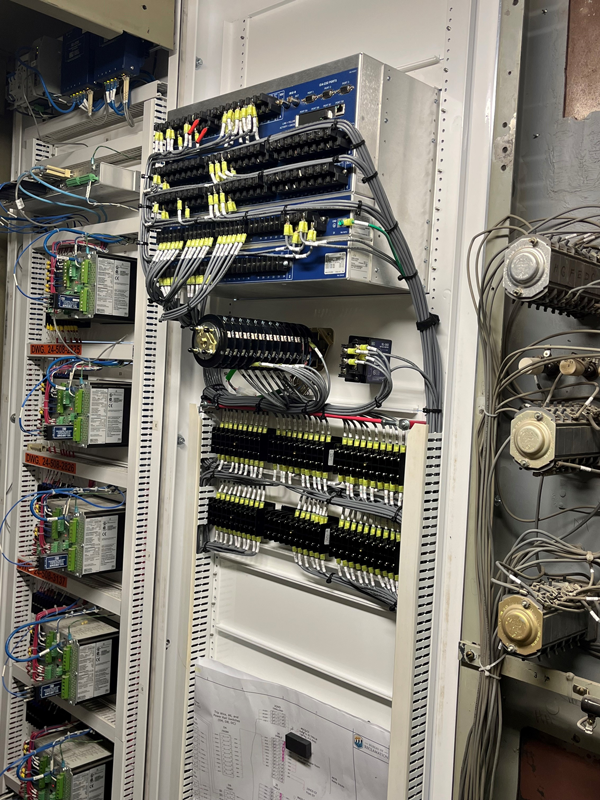 A differential relay, which is connected in parallel with the bus, is a vital protective device used in power systems to detect electrical faults and ensure the safe operation of equipment. The bus relay, which is the most sensitive and reliable method for protecting a bus from a power differential, is installed at transmission and power distribution substations and switchyards to ensure a balanced power ratio, or that the electrical energy at one point on the bus matches the energy further down the circuit. They are used in Reclamation's powerplant facilities and the 6.9 kilovolt (kV) bus relay at Elephant Butte Powerplant was recently identified as a hazard during Reclamation's Technical Service Center December 2022 Relay Review. Initial planning for replacement started immediately and the installation was recently completed. "The 6.9 kV bus allows power to be taken from each one of the generators and combines it into one line that then goes to the 115 kV transformers that put the power on the grid," Elephant Butte Field Division Facility Manager Benjamin Kalminson, who managed the installation of the new equipment explained. "The differential relay that is being installed will monitor the bus for any faults." Kalminson further explained that this protection is important to ensure if there is a fault in the main 6.9 kV bus it will open the circuit and reduce any equipment damage, outage time, and risk to employee safety if a fault were to occur. "The team that did the design--and ultimately the installation-- of the equipment did a great job. As always there are changes during installation, however those were minor and installation went great," Kalminson said. This improvement to the powerplant is behind-the-scenes and not something that the public can see first-hand, but the new equipment is incredibly important as it will improve our protection of power generation and the safety of our employees onsite. |
 |
Introducing Agents of Discovery: A Reclamation FirstBy Pacifica Casares-Chehy, Albuquerque Public AffairsThe name's Roadrunner. Field Agent Roadrunner. The mission? Your mission, should you choose to accept it, is to solve intriguing trivia found at Elephant Butte's Historic District. The Albuquerque Area Office recently accepted that mission and is excited to announce that it is teaming up with Agents of Discovery®, a free, family-friendly educational mobile geo-cache game customized exclusively for the Elephant Butte Historic District, New Mexico. Much more than just a game, the Agents of Discovery app serves as a vital tool in public outreach and directly addresses the need for interpretive opportunities for visitors. The app will further enhance the visitor experience by exploring the Historic District's beauty and history via a virtually guided tour provided by virtual Field Agent Roadrunner. Elephant Butte visitors can unlock hidden geo-located challenges, solve educational and entertaining trivia questions, and win a well-earned [small] prize available at the EBHD Gift Shop. AAO Project Manager Hannah Schechter first discovered the app's potential at the 2022 National Outdoor Recreation Conference. "Though several regions were interested, Elephant Butte Historic District's selection as a demo site to see if it is good fit for Reclamation was a national decision." Schechter noted that the Forest Service, Bureau of Land Management and National Park Service have already successfully incorporated the app, making it an ideal companion for not only families, but for school field trips, youth groups, scout troops, and adult tour groups. In the game, players will take a deep dive into engaging trivia and topics curated by AAO subject matter experts ranging from the Dam Site to the endangered Rio Grande silvery minnow to hydroelectric power to the role of Reclamation as a federal agency. AAO Recreation and Resource Management Specialist Ashley King-Gonzales noted, "Oftentimes, visitors don't know what it is exactly that public land managers do. Through this app, we can help educate the public on the important work that the Bureau of Reclamation does that affects their everyday lives." Schechter extends an invitation to her fellow Reclamation employees and their families to explore the app and provide their valuable feedback. "We are excited to share this experience with our Reclamation family—whether they are working at the historic district or enjoying the day off with their families," said Schechter. "We've included many different divisions and experts across AAO to help develop the questions and answers. We also plan to rotate the questions to get fresh information on the app and keep people engaged and coming back for more!" The Agents of Discovery app is available for free on iOS and Android devices. To download visit the Apple App Store or Google Play Store on your mobile device. For more information about the app and where else you can play, visit the Agents of Discovery webpage. |
|
from the |
 |
Glen Canyon Dam celebrates 60 years of power generation in 2024By Jenny Erickson, Upper Colorado Basin Public AffairsThis year Reclamation is celebrating 60 years of power generation at Glen Canyon Dam, culminating with the precise anniversary Sept. 4. The anniversary comes at a crucial point in time for the dam, while experts work to identify a range of alternatives and determine near and long-term operations for Lake Powell and Lake Mead and other water management actions for potentially decades into the future.
Lake Powell has the capacity to store nearly two years of the Colorado River's average annual flow, however after 23 years of drought, it now stands at 34% of capacity. The powerplant produces an average of 4 billion kilowatt hours of hydroelectric power each year – enough electricity to help supply the power needs for more than 350,000 homes. It would take 1.8 million tons of coal or 2.4 million barrels of oil to generate the same amount of hydropower that Glen Canyon provides every year using clean, renewable hydropower. Stay tuned, to our Colorado River Basin Facebook page, this year for more facts and information about this exciting and powerful milestone! |
 |
| The new electrical panels being wired at Glen Canyon Powerplant. Reclamation photo |
Transforming Glen Canyon Powerplant: Upgrading Medium-Voltage Transformers
|
|
In case you missed it: |
|
Reclamation Current 1st Quarter 2024What's Current at Reclamation! The Bureau of Reclamation remains focused on its enduring priorities this quarter -- People, Partnerships and Investments! The quarterly video showcase, highlights projects across Reclamation and the dedication of our workforce. |
Interior Region 7 • Upper Colorado Basin 125 South State Street, Room 8100 Salt Lake City, Utah 84138-1147 If you would like to subscribe or unsubscribe to this newsletter, please send an email with your first and last name to ucbpao@usbr.gov. |

